Producing small lots of an extraordinarily diversified rangeof bolts in a town known for producing knives.
Seki City, Gifu Prefecture, has been known for Seki blacksmithing since the Kamakura era and remains famous today as a place where knives are produced. Meira’s Seki plant and the No. 2 Seki plant are both located in a corner of an industrial park on the outskirts of Seki City. The company’s No. 3 Seki plant is also in Seki City, such that the city is home to a cluster of the company’s production lines.
Each plant is clearly divided into two zones. A number of very long automated manufacturing lines have been set up on the site where bolts for automobiles are manufactured. At one end of each line is a large site for the storage of materials. Wire rods supplied from this site are automatically processed on a line, and completed bolts are spit out from the opposite side of the line without stopping. Lines of trucks formed for just-in-time deliveries are parked outside the plant buildings, ready to ship freshly made bolts immediately upon loading to an automobile assembly plant.
At the same time, the site for the manufacturing of bolts for aeronautics and space applications is set in a separate part of the building where many artisans operate dedicated machine tools. A small materials storage site resembling part of a home hardware store carries not only steel items, but also aluminum alloys, titanium alloys, heat-resistant nickel alloys, and other special materials. Workers manufacture bolts by picking out the required materials on their own according to work instructions, setting them in the machines by hand, visually checking each individual unit, and checking units by tactile means.
About 100,000 bolts for aeronautics and space applications are produced monthly, a figure that is less by far than that for bolts produced for automobiles, 200,000,000 bolts per month. At the same time, many bolts for aeronautics and space applications are subject to a specialized design process to accommodate their use for a given part of a given model, such that there are over 6,000 different items produced. The harnessing of craftsmanship is the most rational means by which small lots of an extraordinarily diversified range of bolts can be produced.
The quality of screws is a function of both the materials used and the processing technologies applied. To date, Japan has produced high-grade bolts through collaborations between the steel and metal industry, which ships high-grade materials, and manufacturers like Meira of parts made possible by the harnessing of a high level of technology. However, the use of off-the-shelf general-purpose goods sourced from low-cost, mass-production overseas manufacturers even in the field of aeronautics has become common. Meira thus seeks to differentiate itself by building a framework for stably providing high-quality, highly unique products.
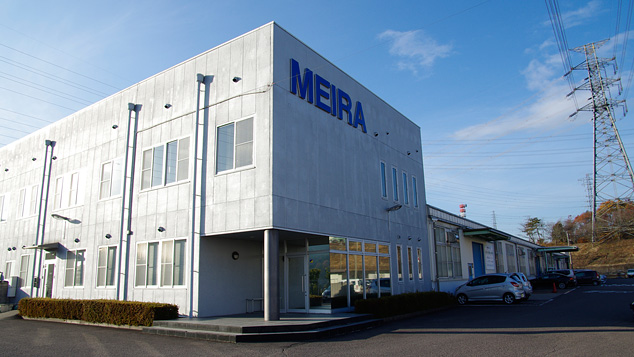
The No. 2 Seki plant, one of the sites where parts for aeronautics and space applications are produced by Meira (Seki City, Gifu Prefecture).
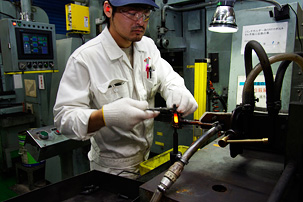
The head of a bolt is formed through hot forging.

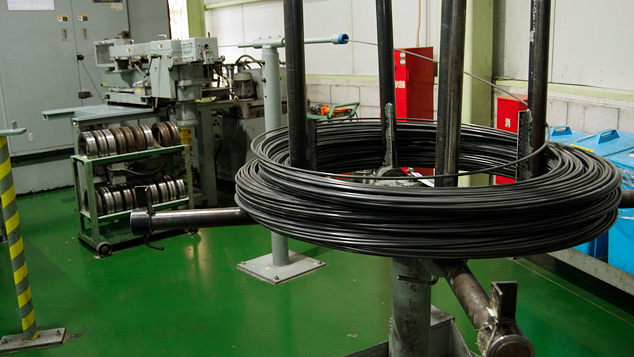
Bolts for airplanes, which are made in greater quantities than bolts for space applications, are manufactured from coils using a serial forging machine.

Male screws are processed with a thread rolling machine. Precise thread-rolling technology is one of Meira’s competitive advantages.

In processing parts for making aircraft, a machining center (MC) (pictured on the left) or a multifunction machine (pictured on the right) is used that combines the functions of an MC and an NC lathe.
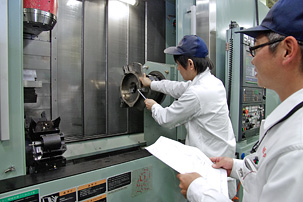

A tapping processing line for processing nuts (female screws).
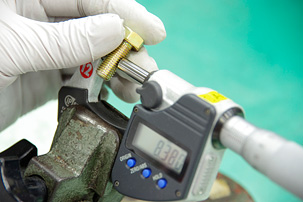
Efforts are undertaken to absolutely ensure proper quality control. In this photograph, the diameter of a bolt is measured with a micrometer.
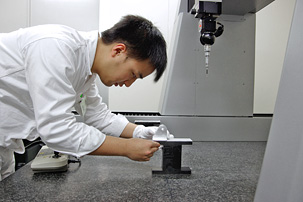
Fittings and other complex shaped parts are subject to size inspections using a three-dimensional measuring machine.
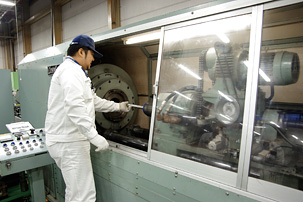
A swaging machine for processing rods as a structural material in aircraft, the Kounotori transfer vehicle, and other applications. The outer diameter of the pipe is narrowed through cold forging.
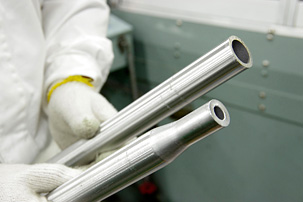
A rod processed with a swaging machine (front) and a pre-processed pipe (back).

A rod is subject to strength testing in a universal testing machine. Various tests, including pulling, compression, and bending, can be conducted in this testing machine.
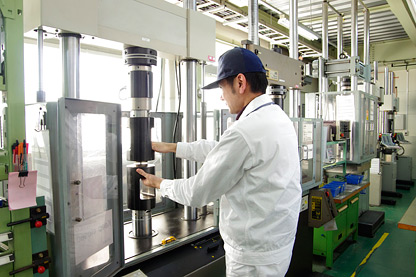
A fatigue testing room. This photograph shows an array of different fatigue testing machines laid out in a row.

Nuts, bearings, and other items are mounted onto a rod processed with a swaging machine.
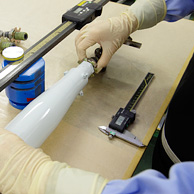

MEIRA
INTERVIEW
インタビュー
The field of space is a dojo to be use forhoning our technologies.
MEIRA
Exective Director and Head of the Aviation Business Unit
Makoto Ohashi
